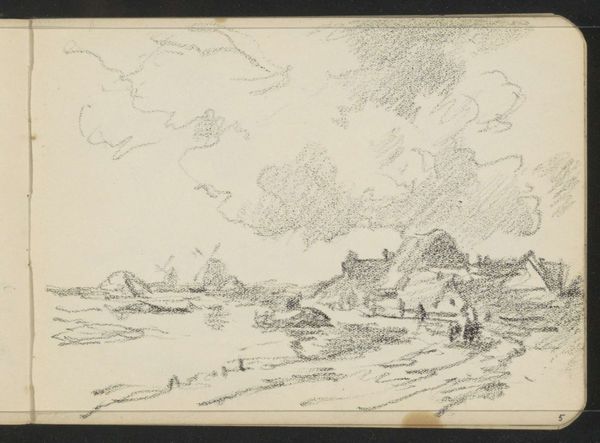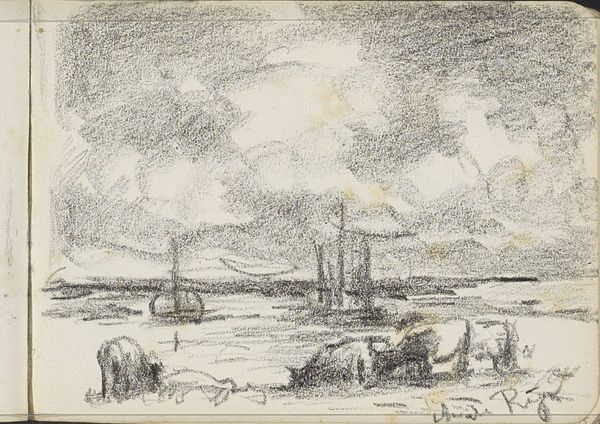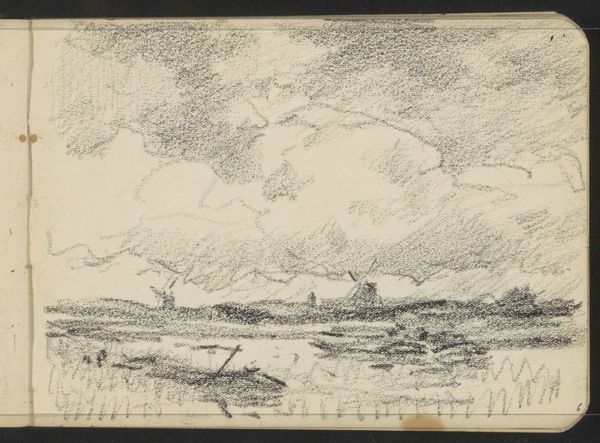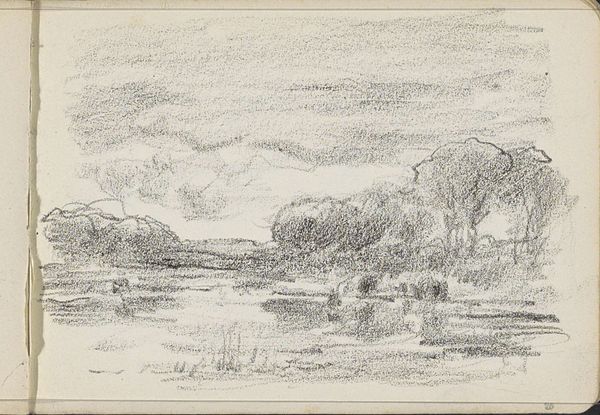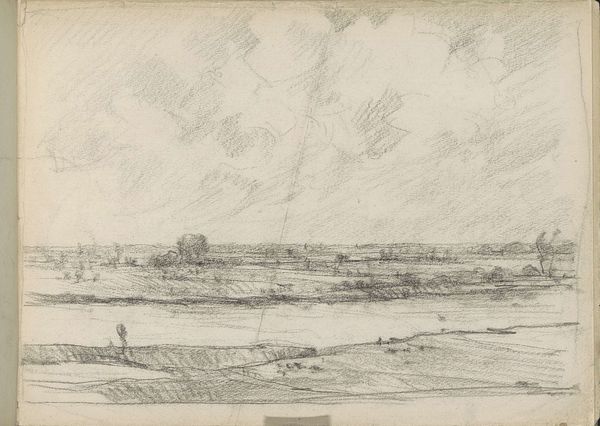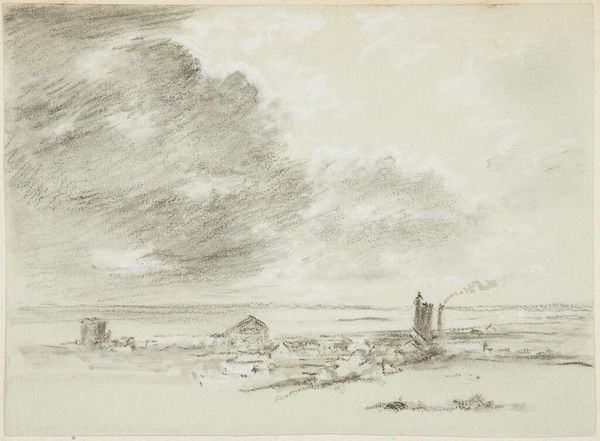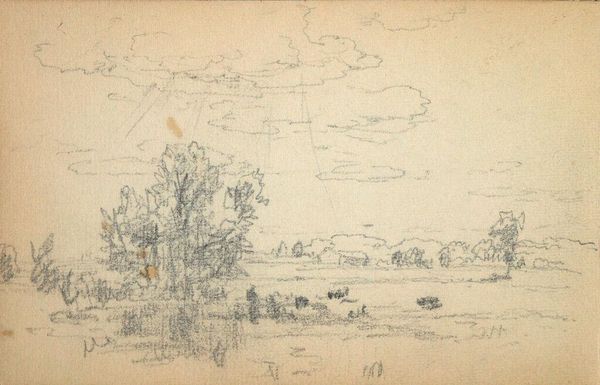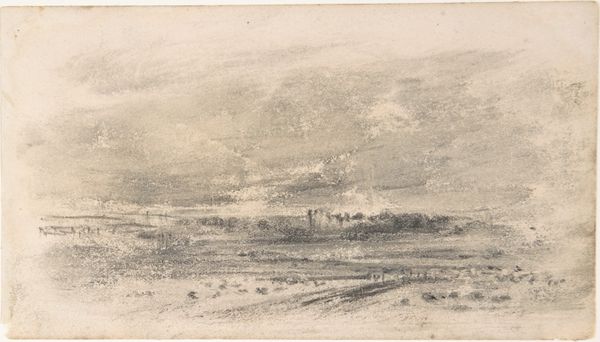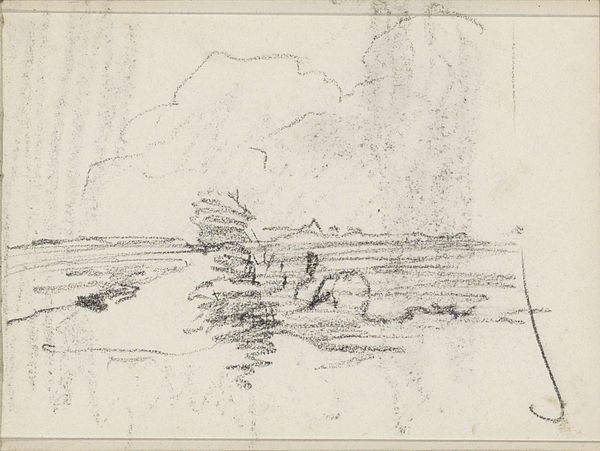
Dimensions: height 116 mm, width 162 mm
Copyright: Rijks Museum: Open Domain
Editor: We're looking at Willem Cornelis Rip's "River Landscape with Mills" from 1905, rendered in pencil. There's a stark simplicity to it; the monochromatic palette and rough lines evoke a sense of quiet industry under a looming sky. What story do you think it’s trying to tell? Curator: It's less about telling a specific story and more about capturing a mood, a specific moment within a larger cultural narrative. Consider the date: 1905. What social and economic changes were happening in the Netherlands at the time? Rip situates the windmill – traditionally a symbol of Dutch prosperity and ingenuity – in this quickly changing world. Does it feel celebratory or cautionary to you? Editor: That’s a good point. The mills almost appear to be fading into the landscape. It definitely carries a sense of anxiety. Almost as if the industrial revolution threatened traditional Dutch identity and economy. Curator: Precisely. The drawing’s rough texture, created with swift, decisive pencil strokes, mirrors this anxiety. Think about the art world as well. Impressionism, with its emphasis on fleeting moments and personal expression, challenged the academic painting traditions of the 19th century, disrupting established institutions of taste. So, the work becomes, in some ways, a statement on a shifting art world and society in general. Does knowing that shift your interpretation? Editor: Absolutely, it gives the drawing a new depth. I thought it was just a simple landscape sketch, but it represents cultural anxieties. Thanks! Curator: My pleasure. Every artwork participates in multiple narratives.
Comments
No comments
Be the first to comment and join the conversation on the ultimate creative platform.
